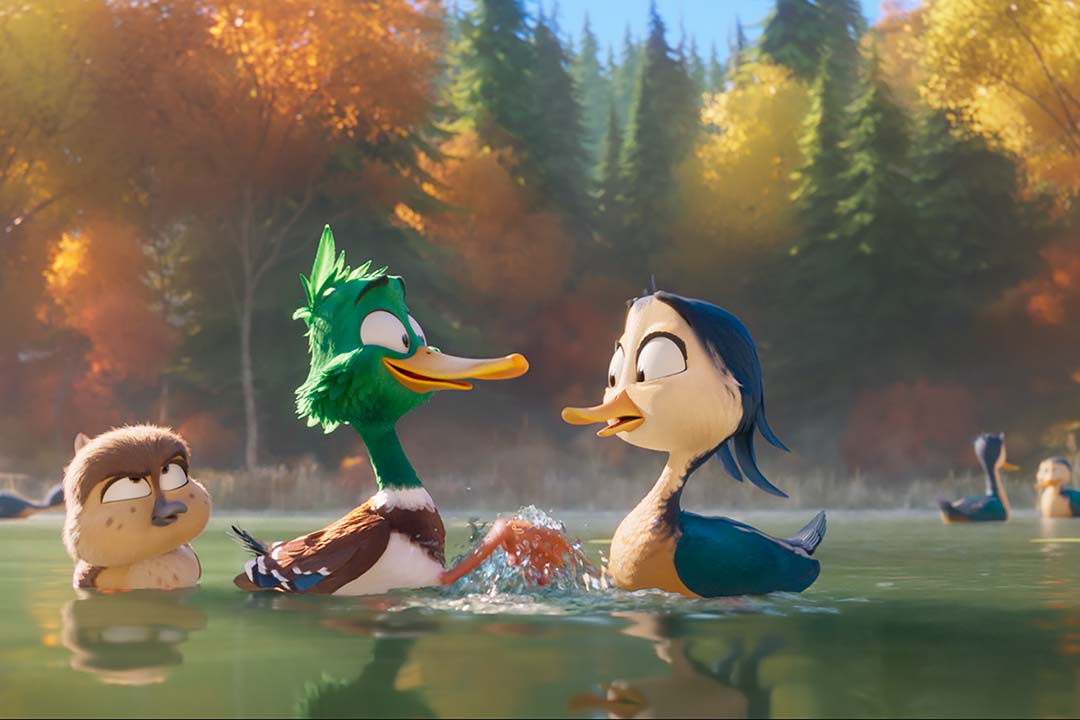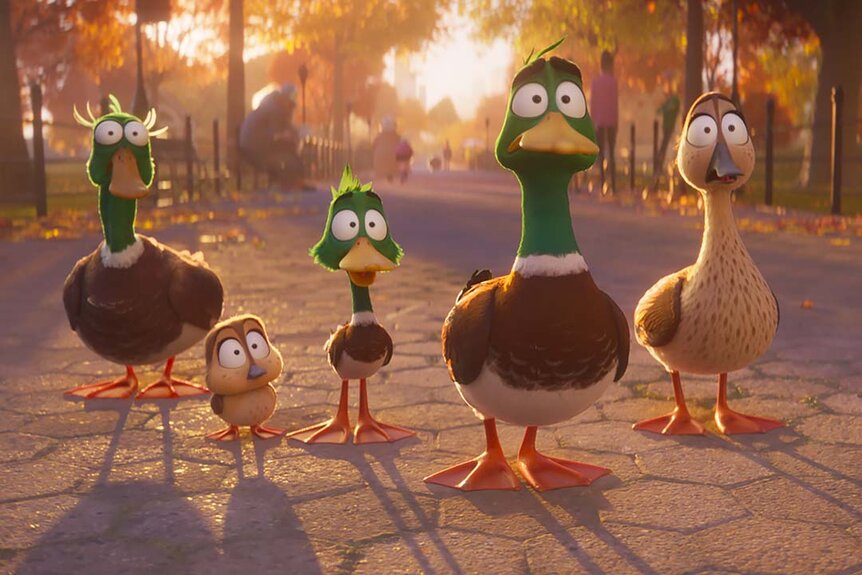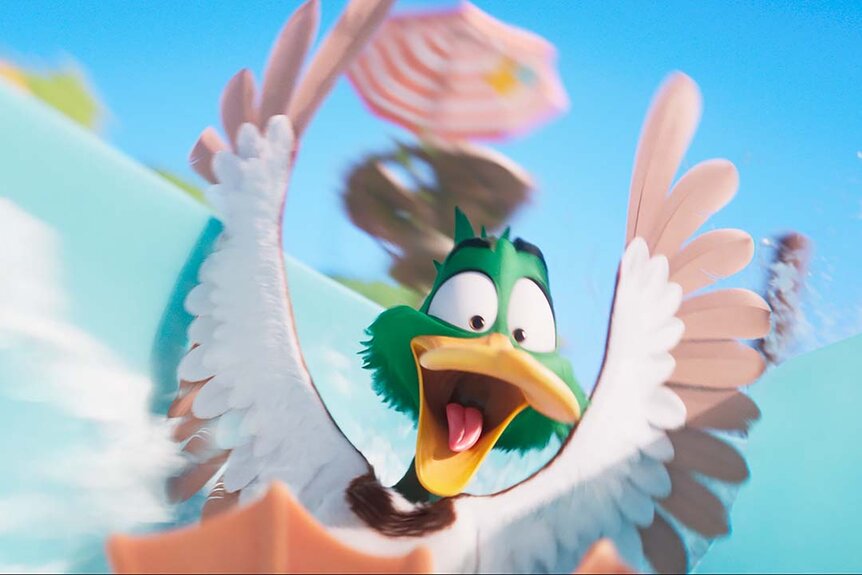Create a free profile to get unlimited access to exclusive videos, sweepstakes, and more!
Migration: How Does Imprinting Work with Ducks?
Ducks are all about family. See for yourself in Migration, in theaters December 23.

Illumination and Universal Pictures’ upcoming animated family film Migration follows the misadventures of a family of ducks living in a New England pond. The feathered family is made up of parents Mack and Pam Mallard (Kumail Nanjiani and Elizabeth Banks, respectively), son Dax (Caspar Jennings), and daughter Gwen (Tresi Gazal), and they’re a pretty good representation of actual ducks.
Baby ducks forge intense familial bonds with their mother and siblings in the first few hours and days of their lives. Those bonds are so powerful that they last a duck’s entire lifetime, and they define the framework for how a duck experiences the world.
What Is Imprinting?
If you’re a baby duck, freshly hatched, survival means telling the difference between duck and non-duck, family and stranger. Ducklings do that through a process known as imprinting. During a “sensitive period” in the hours and days after hatching, ducks form an irrevocable bond with their immediate family. They see and interact with their mother and siblings, and that creates a neural stamp in their minds. It tells them who to cling near to, who to mimic, and how to behave.
RELATED: ‘Migration’: Elizabeth Banks, Kumail Nanjiani & Awkwafina Leading Illumination’s New Animated Film
A lot of what we know about imprinting in birds – ducks are far from the only birds who imprint – comes originally from Konrad Lorenz, a biologist who ultimately won the Nobel Prize in 1973, for his work on bird behavior. Lorenz found that ducklings are seemingly hardwired to imprint, and they’ll do it with practically any moving object that happens to be around during the sensitive period.
In the decades since Lorenz’s pioneering work, we’ve learned quite a bit about the complexity of imprinting. Birds, including but not limited to ducks, take in all kinds of sensory information which they use to build their imprint. In experiments, ducklings were able to imprint on pairs of simple 3D shapes like spheres or cubes. And there is some indication that they have an inherent preference for certain colors. For reasons unknown, ducklings appear to prefer blue spheres over white ones. Sound also seems to play a part and they have a preference for natural sounds over artificial ones.
Imprinting on the Wrong Mom
More than just a familial connection, imprinting is the way that ducks learn who they are and how to interact with the world, according to the Wildlife Center of Virginia. It provides a workable evolutionary advantage; the odds are the first things a baby duck sees are their mother and siblings. Identifying with them and following their lead is a good bet for survival, but sometimes it goes wrong.
Ducklings are well known for occasionally imprinting on something other than a duck and then spending their adolescence following a person or a family pet around. It’s cute, but it’s not always a good thing. When ducks imprint on humans they aren’t necessarily friendly. Imprinting on people means they identify with people the way they would normally identify with other ducks. They might express that identity through affection, but they might also be aggressive toward people the same way they might be hostile toward other ducks.
RELATED: 'Migration': Elizabeth Banks, Kumail Nanjiani & Awkwafina leading Illumination's new animated film
Worse than that, imprinting is how ducks learn to be duck and those who imprint on people often have trouble interacting with their own kind. Having missed out on a normal ducklinghood, they never learned how to behave correctly within duckmanity.
That’s not necessarily a problem if we’re talking about ducks at the family farm, but it can cause problems for wildlife who live in proximity to humans. Improper imprinting is an ongoing challenge for conservationists who have to balance caring for young birds and ensuring they learn how to be birds. To that end, conservationists go to great lengths – feeding baby birds with puppets and even wearing costumes – to minimize the psychological contamination of human contact.
Get inside the mind of a duck and see the power of feathered family in Migration, in theaters December 23, 2023.




























